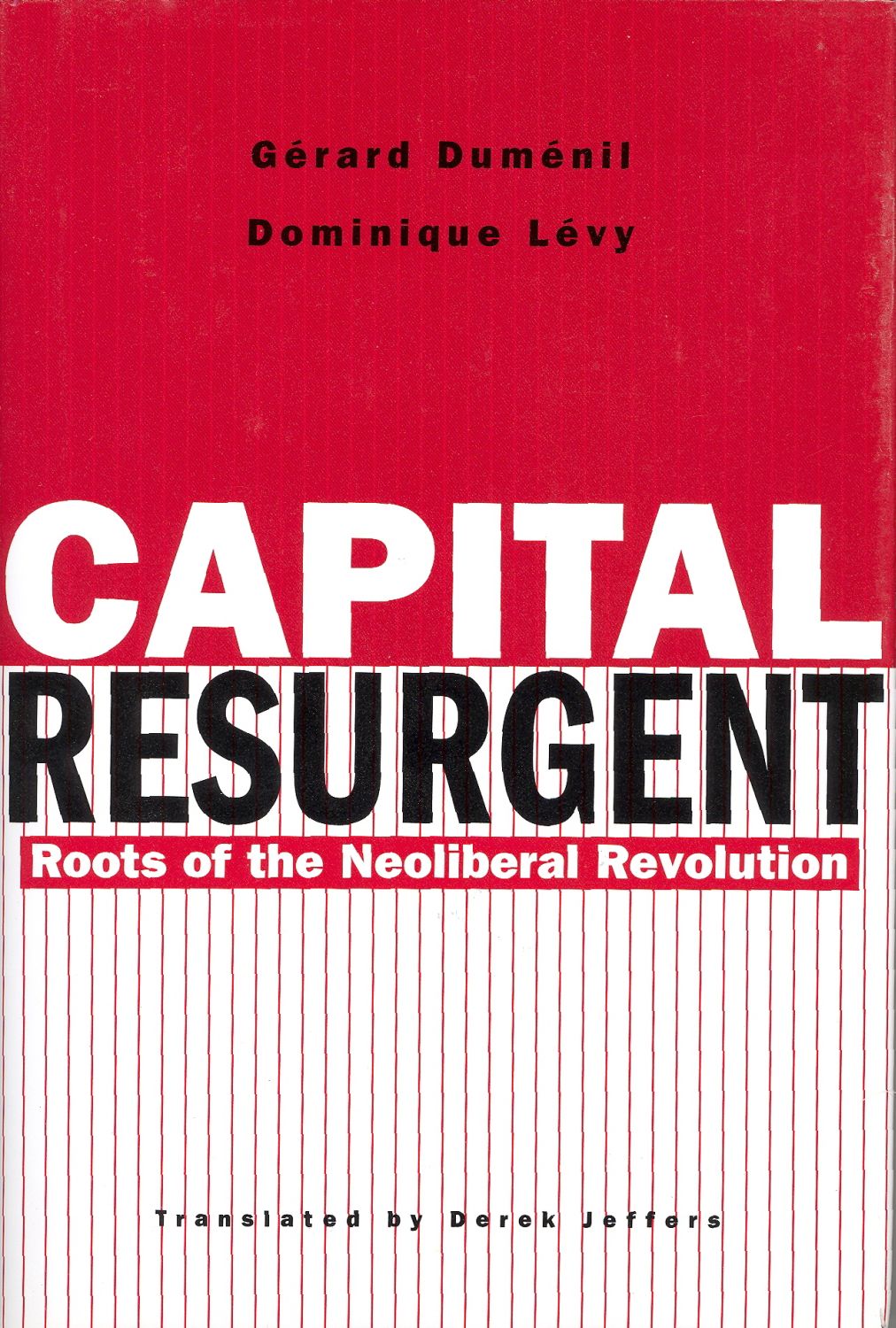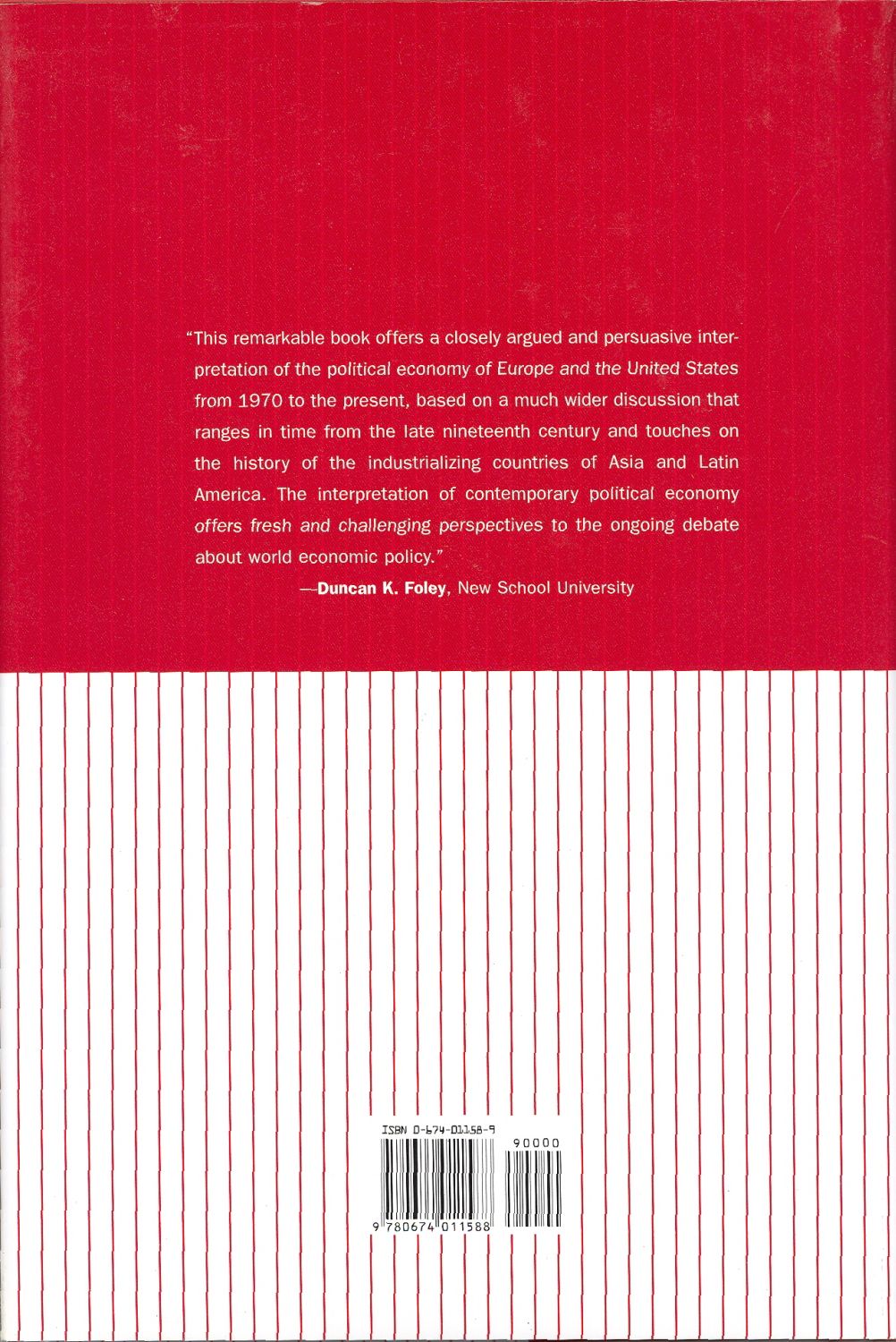
|

|
Capital Resurgent
Roots of the Neoliberal Revolution
G. Duménil, D. Lévy,
Capital Resurgent. Roots of the Neoliberal Revolution,
Translated by Derek Jeffers
Harvard University Press, Harvard, Massachusetts, 2004.

|

|
Read an excerpt in PDF format.
![]()
The advent of economic neoliberalism in the 1980s triggered a shift in the world economy. In the three decades following World War II, now considered a golden age of capitalism, economic growth was high and income inequality decreasing. But in the mid-1970s this social compact was broken as the world economy entered the stagflation crisis, following a decline in the profitability of capital. This crisis opened a new phase of stagnating growth and wages, and unemployment. Interest rates as well as dividend flows rose, and income inequality widened.
Economists Gérard Duménil and Dominique Lévy show that, despite free market platitudes, neoliberalism was a planned effort by financial interests against the postwar Keynesian compromise. The cluster of neoliberal policies--including privatization, liberalization of world trade, and reduction in state welfare benefits--is an expression of the power of finance in the world economy.
The sequence of events initiated by neoliberalism was not unprecedented. In the late nineteenth century, when economic conditions were similar to those of the 1970s, a structural crisis led to the first financial hegemony culminating in the speculative boom of the late 1920s. The authors argue persuasively for stabilizing the world economy before we run headlong into another economic disaster.
![]()
Table of Contents
CRISIS AND NEOLIBERALISM
1. The Strange Dynamics of the Intolerable and of Change
2. Economic Crises and Social Orders
CRISIS AND UNEMPLOYMENT. NEW GROWTH?
3. The Structural Crisis of the 1970s and 1980s
4. Acceleration or Slowing of Technological Progress?
5. America - Creator of Jobs, Europe - Unemployed
6. Controlling Labor Costs, Reining in the Welfare State
7. Unemployment - Historical Fate?
8. New Growth, the End of a Trajectory à la Marx, and the End of the Crisis?
THE LAW OF FINANCE
9. The Interest Rate Shock. The Weight of Dividends
10. Keynesian State Indebtedness. Household Indebtedness
11. The Epidemic of Financial Crises: the 1979 Coup and Globalization
12. Globalization Under Hegemony
13. Financialization: Myth or Reality?
14. Does Finance Finance the Economy?
15. Who Benefits from the Crime?
THE LESSONS OF HISTORY
16. An Historical Precedent: the Crisis of the End of the Nineteenth Century
17. Can the Crisis of the End of the Twentieth Century be Ended like that of the End of the Nineteenth?
18. Two Periods of Financial Hegemony - at the Beginning and at the End of the Century
19. Risks Inherent in an End to the Structural Crisis: the 1929 Precedent
20. Technological Heterogeneities, International Capital Mobility and Stock Market Fever
21. Between Two Periods of Financial Hegemony: Thirty Years of Prosperity
HISTORY ON THE MARCH
22. A Keynesian Interpretation
23. The Dynamics of Capital and Beyond
Buy Capital Resurgent at Harvard University Press: http://www.hup.harvard.edu/catalog/DUMCAP.html
ISBN 0-674-01158-9 --- 256 pages, April 2004 --- Price: $55.00 / Euros 50.70